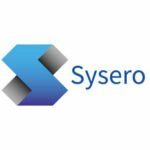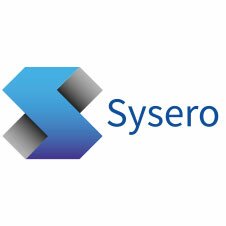Sysero: Five ways to prepare for the remote law firm
The COVID-19 pandemic has led to an unprecedented transformation in the modern law firm, where conducting business and working from home has quickly become the new “normal” for millions of lawyers and staff across the world. While the move to remote working happened swiftly, it’s unlikely that law firms will return to traditional ways of working any time soon. To be successful in the long-term, law firms need to take a structured and technology-driven approach to enabling their remote workforces and advising their clients, wherever they may be.
Here, we share five ways in which you can start preparing your law firm for a future of remote work.
Build a Strong Technology Foundation
The first step in enabling an efficient remote workforce is ensuring you have the right technology infrastructure in place. Each of your digital tools should not be viewed in isolation, rather as a critical component of a larger technology ecosystem, which needs to be integrated with existing systems.
For law firms, this means taking an integrated and holistic approach to accessing, managing and sharing critical knowledge assets and know-how. Fortunately, technology systems like Sysero, specialise in developing integrated knowledge platforms designed to drive efficiency and mobility for today’s law firms. With Sysero, firms can create a single system that brings together core elements such as knowledge management, cloud-based document automation, contract management, digital client onboarding, and client self-service portals to build a complete digital ecosystem for their firm, whilst also integrating seamlessly with internal systems. For example, Wedlake Bell, has streamlined the way its lawyers work – from accessing knowledge and automating documents to onboarding clients – with a single, secure system from Sysero.
Automate Manual Processes
Research indicates that more than 70% of employees think the future workplace should be fully automated – and law firms are no exception. Automation of traditionally manual tasks can accomplish a range of efficiencies and advantages in the modern firm. According to a Legal Trends Report, lawyers can spend up to 50% of their time on administrative tasks, such as drafting and reviewing documents. Using automation and workflow tools can not only simplify traditionally manual processes, but also make it easier to conduct business away from the office.
Cloud-based workflow automation tools can streamline every-day processes – from business acceptance and contract negotiation to document generation and legal service delivery – whilst providing lawyers and staff with greater flexibility and mobility. For example, firms can employ workflow automation to move from traditional ways of drafting and executing contracts to a more modern, web-based solution powered by online questionnaires and e-signing capabilities.
Select Easy-to-Use Tools
It doesn’t matter how innovative your firm technology is if no one uses it. A successful technology platform requires broad user-adoption, which greatly depends on its ease of use. Choosing technology tools that balance complex functionality with easy-to-use interfaces is one of the main ways that firms can ensure that even the least tech-savvy lawyers and staff will realise the benefits of new technology.
This can be especially difficult in the legal sector, as legal documents are notably complex. However, solutions like Sysero make it easy to quickly automate and update even the most complex legal documents, without any programming. Sysero’s unique mark-up tool enables lawyers and staff to easily create templates within Microsoft Word and execute contracts while on-the-go.
Embed Security and Compliance
The rapid move to remote work has unsurfaced some serious security and compliance concerns for today’s law firms. The pandemic has brought with it an onset of new cyberattacks aimed at exploiting the pandemic to spread malware and steal sensitive information. Many firms now find themselves struggling to navigate the new security and compliance implications of remote working.
Fortunately, legal workflow automation tools can go a long way toward ensuring compliance and mitigating security risks. By embedding compliance and security best practices into everyday processes, workflow automation can be the key to minimising risk amongst remote workers.
Streamline Client Transactions
As both lawyers and clients adopt remote ways of working, successful firms will find new ways of providing quality service delivery with less hands-on support. With legal self-service portals, firms can provide clients with instant access to the information they need, when they need it, without having to contact a lawyer.
Legal self-service portals leverage workflow automation to enable clients to quickly generate firm-approved documents on a self-service basis from a web-based portal. For example, an in-house counsel client might use its law firms’ self-service portal to quickly access an NDA template and easily complete it using an intuitive online form. This self-service approach affords firms the flexibility to serve clients in a remote environment, while also creating service differentiation and boosting profitability.



